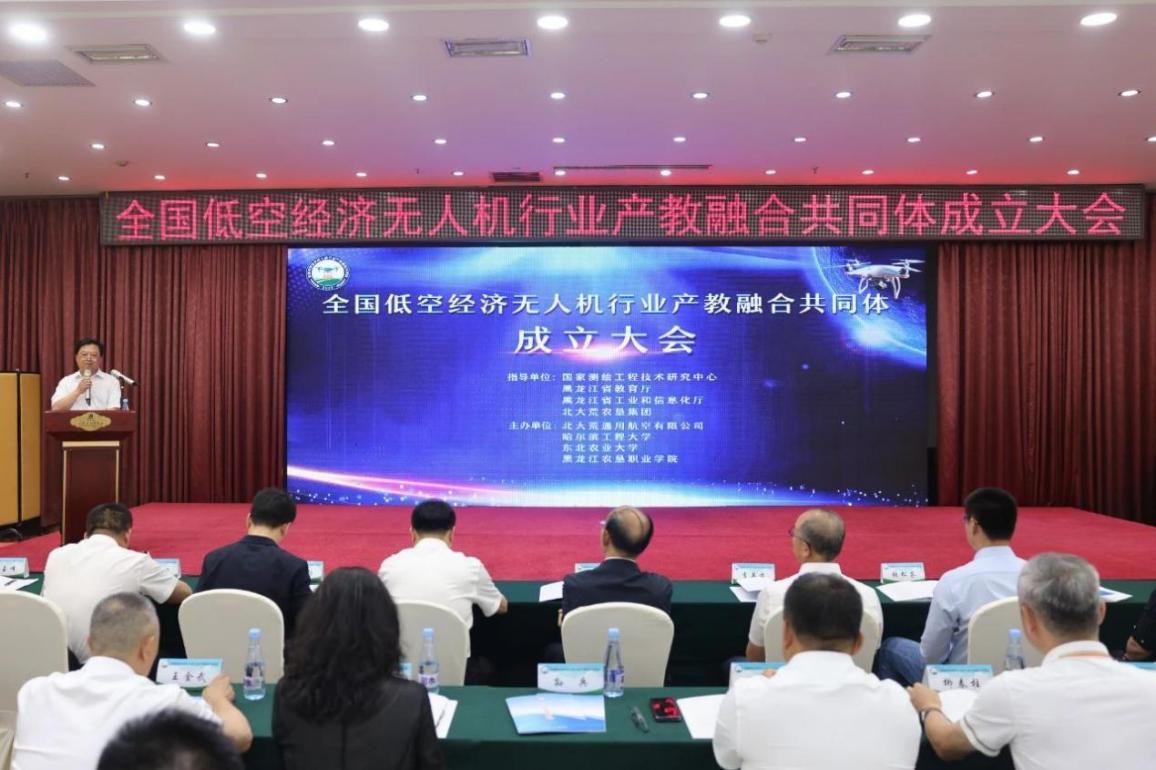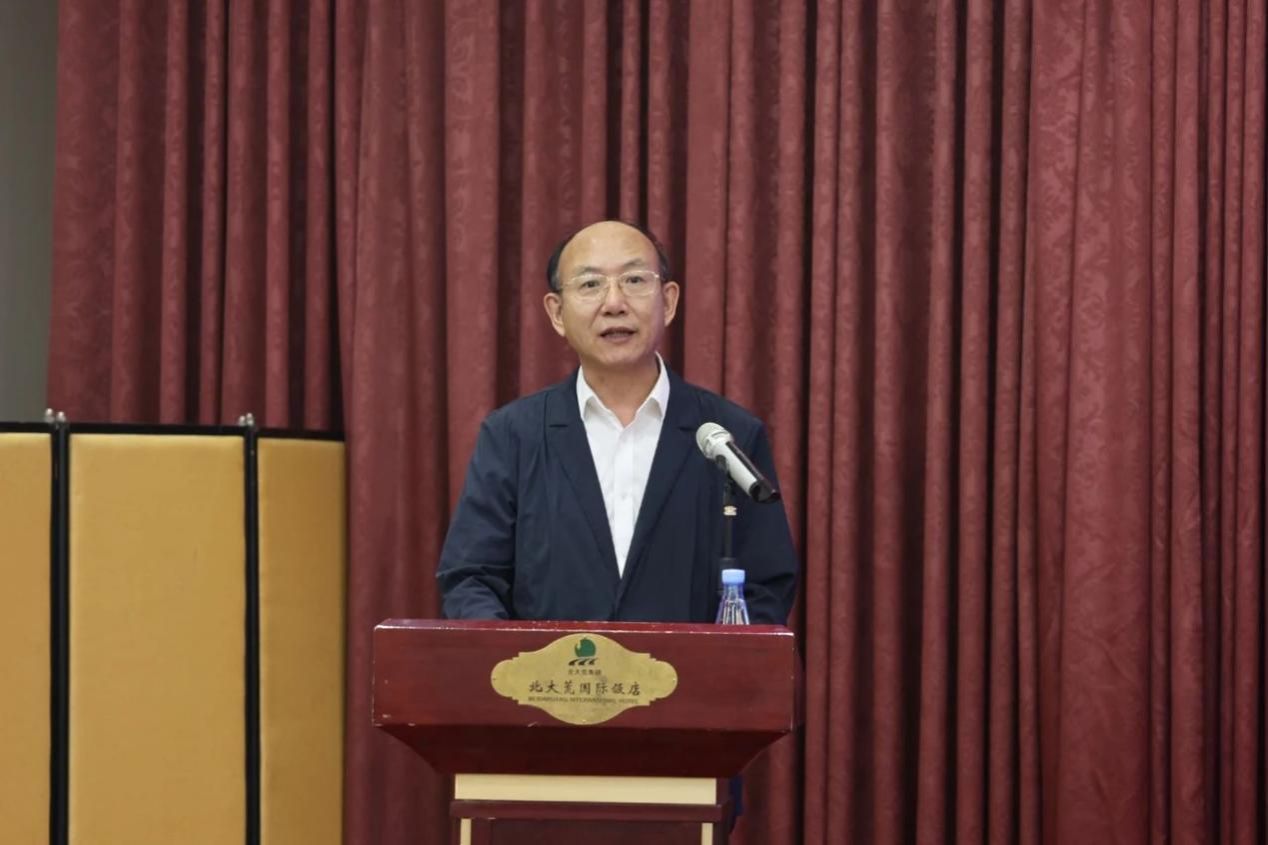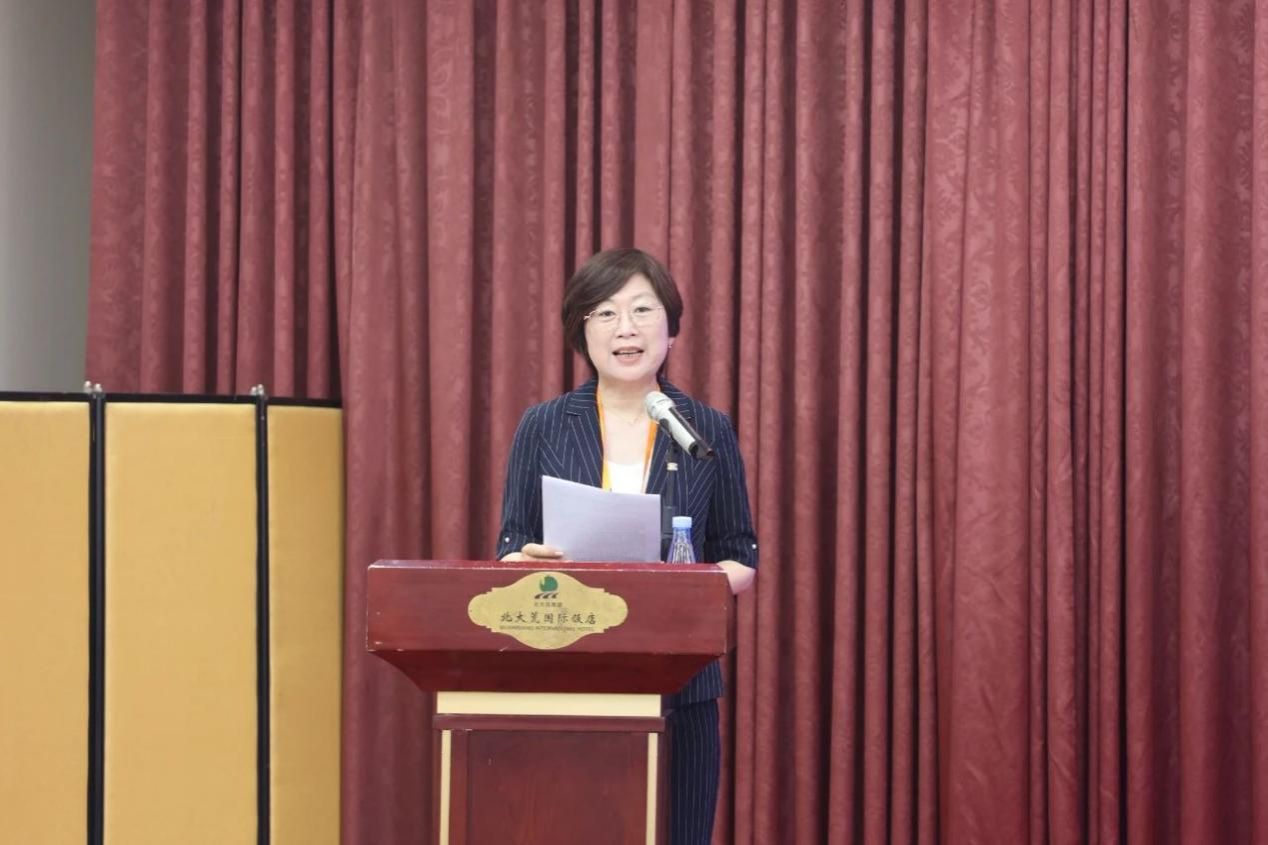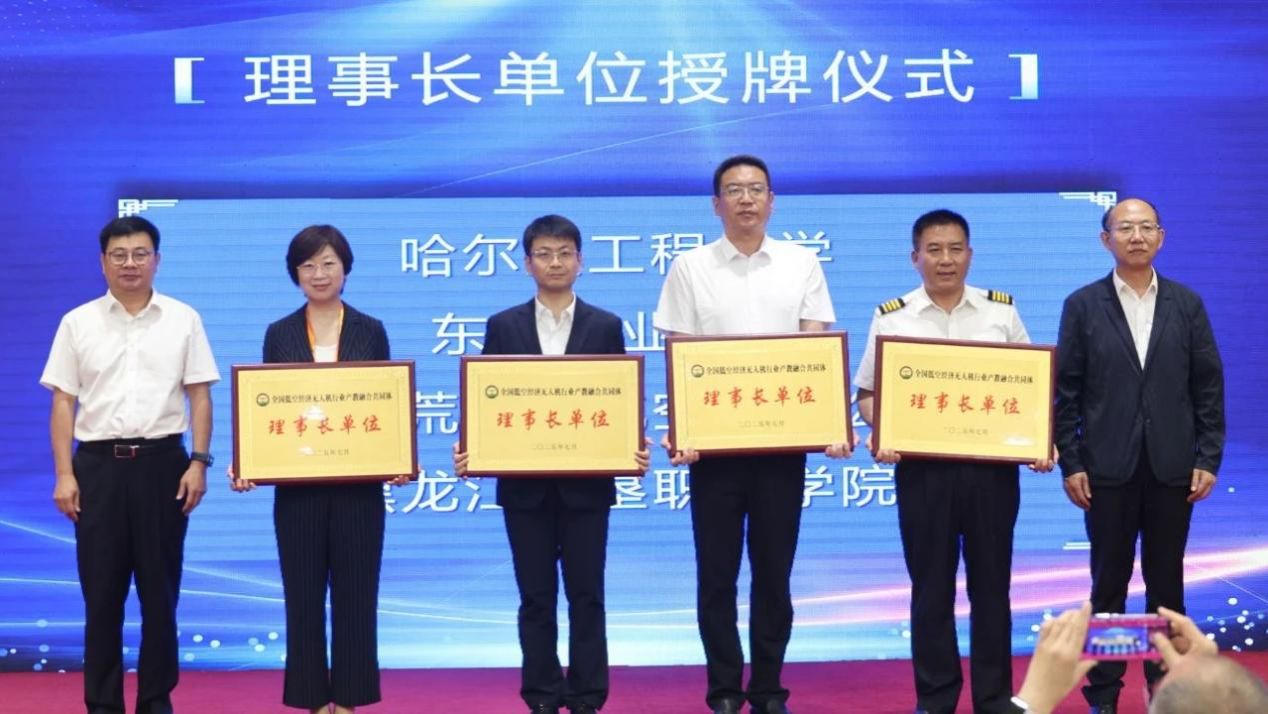On July 2, the inaugural meeting of the National Low-altitude Economy Drone Industry-Education Integration Community was held in Harbin. DING Zhexue, First-level Inspector of the Heilongjiang Provincial Department of Education, and GENG Jing, President Assistant of Harbin Engineering University(HEU), attended the meeting and delivered speeches.

DING Zhexue put forward three suggestions for the development and construction of the community: First, focus on the precision of industrial demand, closely follow the technological needs of industrial development and frontier technological advancements, leverage the dual roles of enterprises and institutions, and precisely define talent cultivation goals. Second, deepen model innovation, break through institutional and mechanistic barriers, build a new form of multi-party collaboration, precisely match supply and demand, and strive to become a national model. Third, emphasize tangible results, establish an operational monitoring and evaluation mechanism, ensure precise resource allocation, effective project implementation, and form a pattern where demonstration leads to industrial synergy.

GENG Jing stated that Harbin Engineering University (HEU) is strengthening low-altitude agricultural technology R&D, deepening the application of low-altitude campus scenarios, laying out specialized directions in low-altitude technology and engineering, and building a matrix of five distinctive application scenarios: agriculture, forestry, cold-region, marine, and campus, to explore new pathways for low-altitude economic development comprehensively. HEU will fully leverage its advantages in scientific research and talent, uniting with all members of the community to deliver cutting-edge technologies and outstanding talent to the low-altitude economy drone industry, injecting strong momentum into the vigorous development of China's low-altitude economy.

The National Low-altitude Economy Drone Industry-Education Integration Community aims to facilitate resource sharing and complementary advantages among the government, enterprises, and universities, building a new collaborative ecosystem involving "government, enterprises, universities, research institutes, and users" to accelerate the transformation of scientific and technological achievements and industrial upgrading in the low-altitude economy drone sector. Moving forward, the community will prioritize core tasks including tackling key technologies for low-altitude aircraft, expanding agricultural drone application scenarios, and formulating industry talent cultivation standards. By harnessing their respective strengths and strengthening cooperation, they will contribute wisdom and strength to the development of China's low-altitude economy drone industry.

